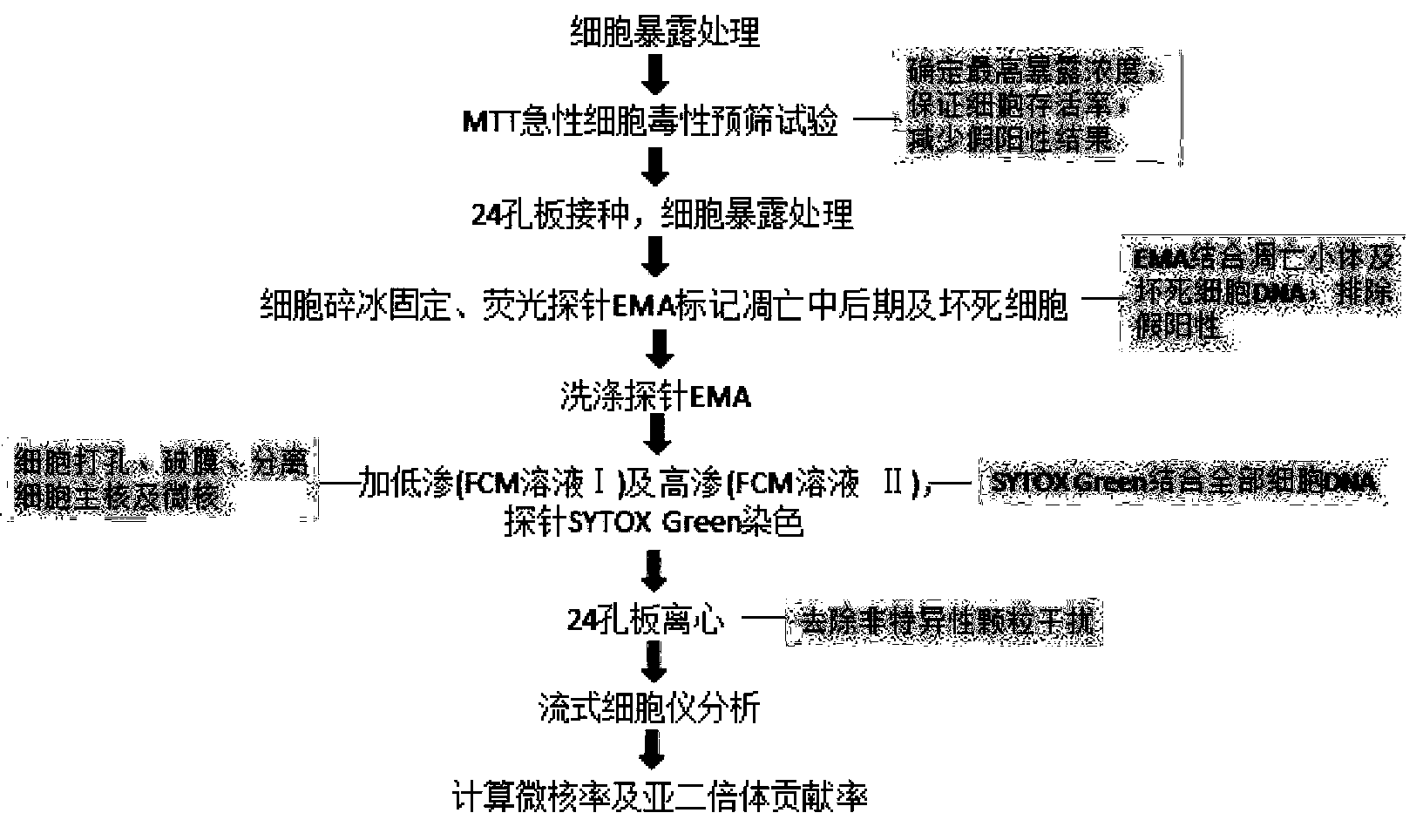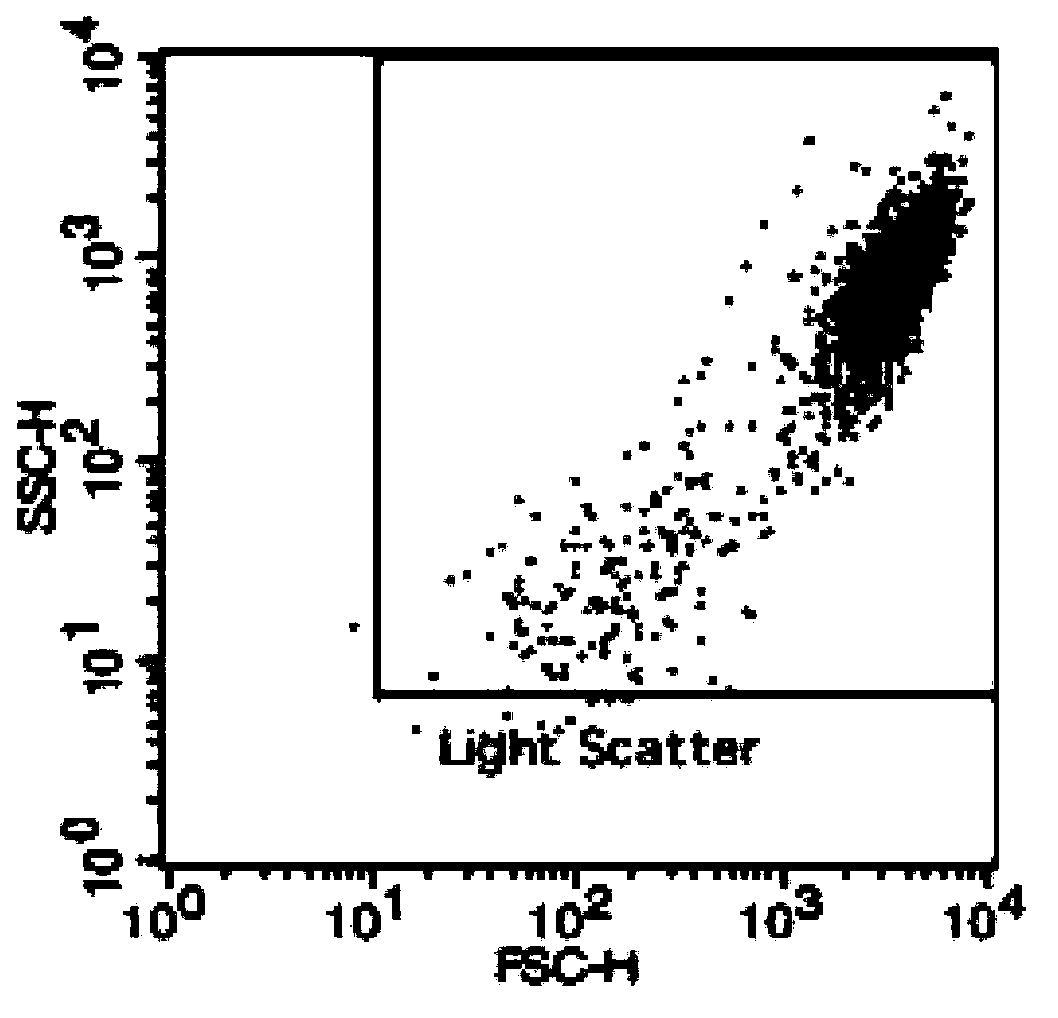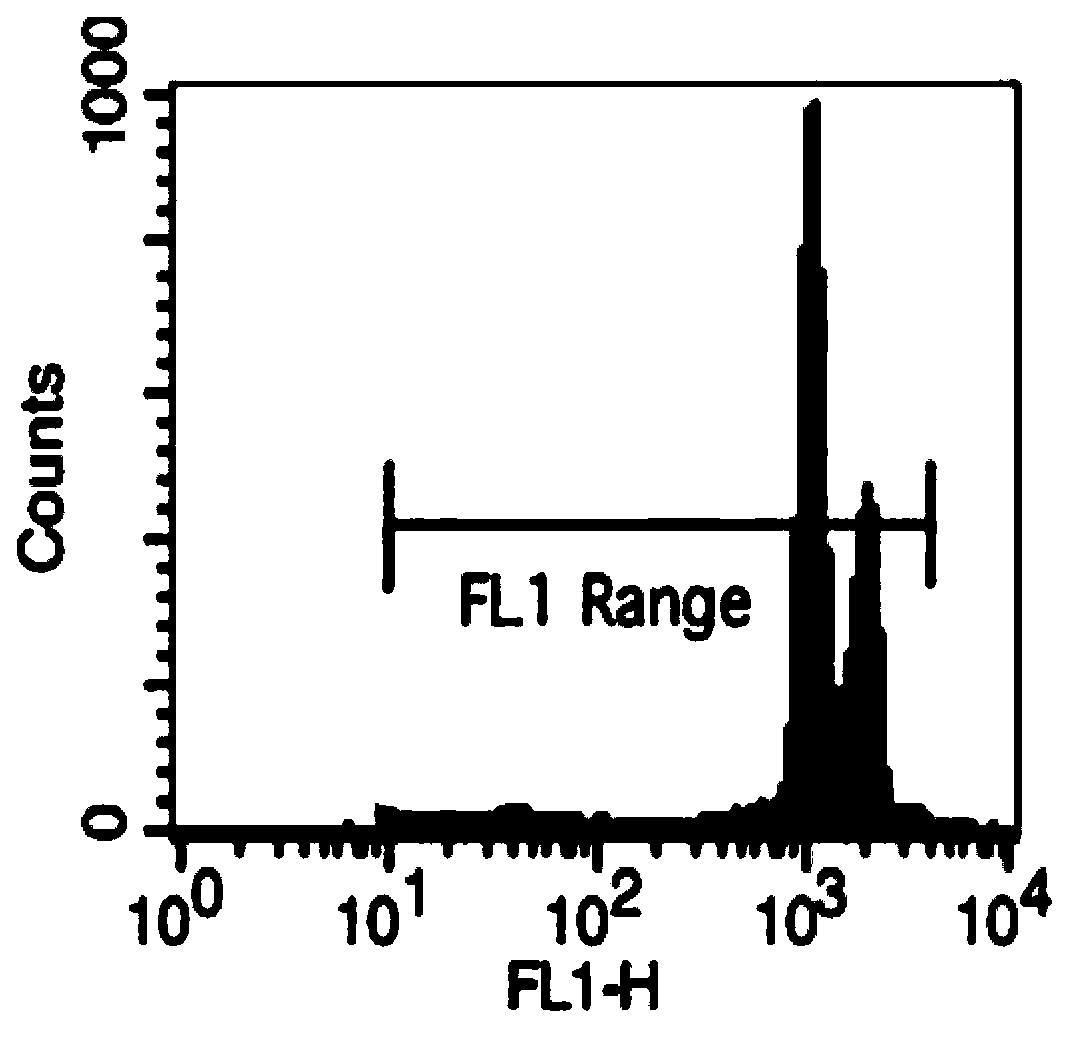In-vitro micronucleus detection method for genetic toxicity of water outlet of drinking water disinfection process
A genotoxicity and micronucleus detection technology, applied in the field of water environment research, can solve the problems of quantitative calculation of the contribution rate of non-micronucleus inducing factors, difficulty in distinguishing micronucleus inducing causes, and being easily affected by subjective factors, so as to reduce false positives. Results, improved sensitivity, good reproducibility
- Summary
- Abstract
- Description
- Claims
- Application Information
AI Technical Summary
Problems solved by technology
Method used
Image
Examples
Embodiment 1
[0057] Example 1. Evaluation of genotoxicity of effluent from an ozone disinfection process in a drinking water plant in the south
[0058] The in vitro micronucleus test was used to evaluate the genotoxicity of the effluent from the ozone disinfection process of the drinking water plant. For the in vitro micronucleus test procedure, see figure 1 .
[0059] 1. Extraction of effluent extract from drinking water disinfection process of a drinking water plant in the south
[0060] After collecting 10L of water in situ with a brown glass bottle, immediately send it back to the laboratory for filtration through a 0.7μm glass fiber filter membrane to remove suspended solids, and pass through 5mL of n-hexane, 5mL of dichloromethane, 5mL of methanol, 5mL of ultrapure water activated HLB column for solid phase extraction, each HLB column is enriched with 2L of water, the flow rate of the column is controlled at about 10mL / min; after extraction, the adsorption column is dried, and 10mL...
Embodiment 2
[0119] Example 2. Evaluation of genotoxicity of effluent from a drinking water plant chlorination disinfection process in the north
[0120] The evaluation method is the same as in Example 1. At the same exposure concentration, that is, when the exposure concentration is 500mL water sample / mL cell exposure treatment solution, the in vitro micronucleus test results of the chlorination disinfection process of a drinking water plant in the north are shown in Table 3.
[0121] table 3
[0122] sample
PUM
 Login to View More
Login to View More Abstract
Description
Claims
Application Information
 Login to View More
Login to View More - R&D
- Intellectual Property
- Life Sciences
- Materials
- Tech Scout
- Unparalleled Data Quality
- Higher Quality Content
- 60% Fewer Hallucinations
Browse by: Latest US Patents, China's latest patents, Technical Efficacy Thesaurus, Application Domain, Technology Topic, Popular Technical Reports.
© 2025 PatSnap. All rights reserved.Legal|Privacy policy|Modern Slavery Act Transparency Statement|Sitemap|About US| Contact US: help@patsnap.com



